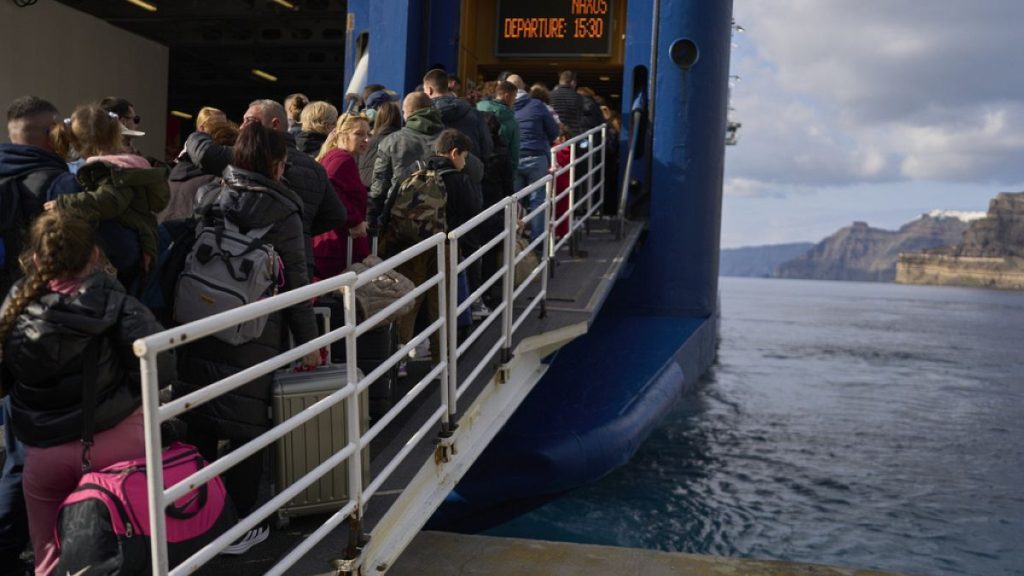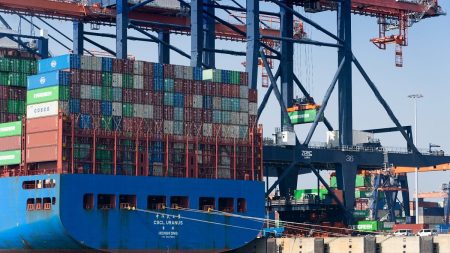The idyllic Greek island of Santorini, renowned for its breathtaking caldera views and picturesque white-washed villages, found itself at the epicenter of a geological drama in recent days, prompting a wave of evacuations and raising concerns about a potential major earthquake. A surge in seismic activity, marked by over 280 undersea tremors recorded in a short span of time, triggered alarm bells among experts and prompted authorities to implement precautionary measures. This flurry of seismic events, concentrated between Santorini and the neighboring island of Amorgos, saw numerous earthquakes exceeding a magnitude of 4.5, shaking the island and unsettling both residents and tourists alike.
The unusual pattern of seismic activity, while deemed unrelated to Santorini’s dormant volcano, prompted immediate action. Authorities swiftly organized additional flights and ferries to facilitate the exodus of hundreds of tourists and locals from the island. Schools were closed as a safety precaution, and access to certain coastal areas, including the historic old port, was restricted due to the risk posed by the unstable cliffs overlooking the sea. Hotels were also instructed to empty their swimming pools to minimize the potential for structural damage in the event of a significant earthquake.
Greek Prime Minister Kyriakos Mitsotakis, while attending a meeting in Brussels, addressed the unfolding situation, urging islanders to remain calm and adhere to the guidance issued by the Civil Protection Authority. He acknowledged the seriousness of the ongoing geological phenomenon, emphasizing the importance of following safety protocols. This call for calm amidst escalating concerns underscores the delicate balance between ensuring public safety and preventing widespread panic.
The constant tremors, continuing through the night and into the following day, generated palpable anxiety among the island’s inhabitants. Residents described an unprecedented frequency of earthquakes, with tremors occurring every 10 to 20 minutes, creating an atmosphere of unease and apprehension. The relentless shaking served as a stark reminder of the island’s vulnerability to seismic forces and highlighted the psychological impact of living in the shadow of potential disaster.
Professor Efthymios Lekkas, a leading authority on earthquake planning and protection in Greece, offered a preliminary assessment of the situation, predicting that the seismic activity could persist for several weeks. He characterized the ongoing process as complex and evolving, requiring ongoing monitoring and analysis. This protracted timeline underscores the unpredictable nature of geological events and the need for sustained vigilance and preparedness.
Santorini, a jewel of the Aegean Sea, attracts millions of visitors annually, drawn to its stunning landscapes and unique volcanic history. This recent seismic episode serves as a reminder of the inherent risks associated with the island’s geological setting. While the immediate threat of a major earthquake remains uncertain, the proactive measures taken by authorities reflect a commitment to prioritizing public safety and mitigating potential damage. The island’s resilience and recovery will undoubtedly be tested in the weeks and months ahead as it navigates this period of heightened seismic activity. The ongoing monitoring of the situation, coupled with the implementation of appropriate safety protocols, will be crucial in safeguarding the island and its inhabitants.














